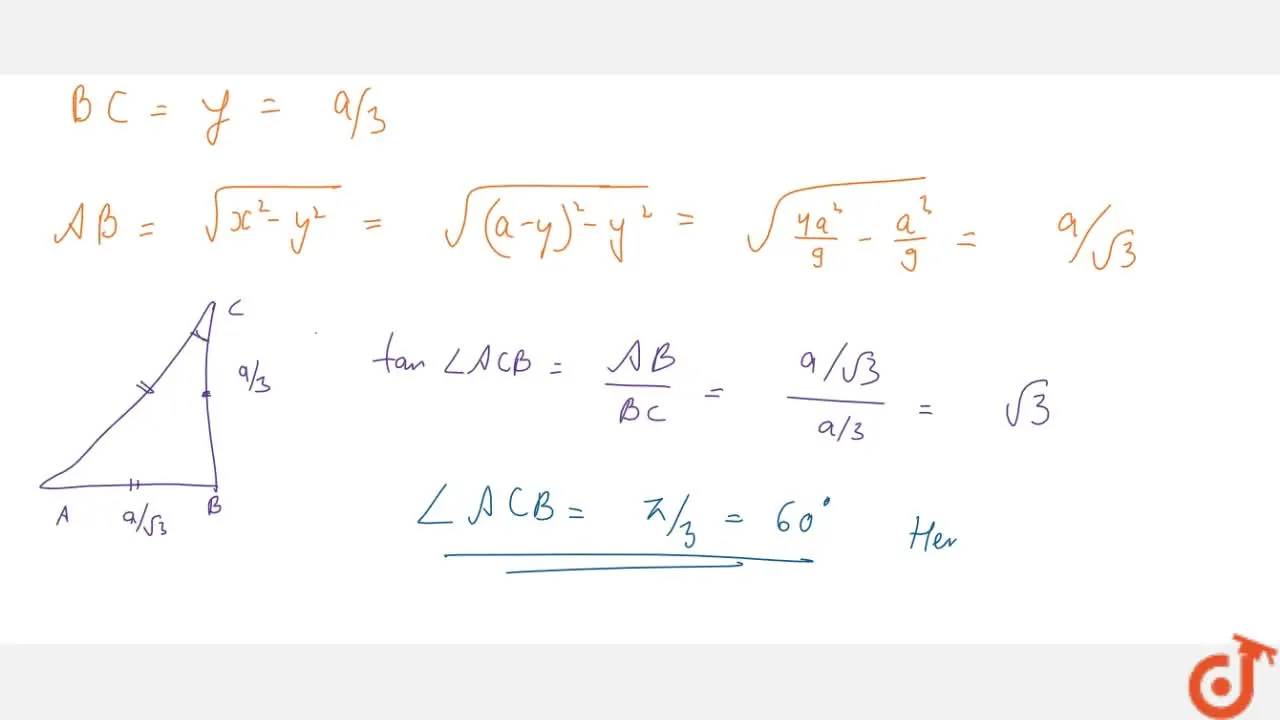If the sum of the lengths of the hypotenues and a side of a right angled triangle is given, show that the area of the triangle is maximum when the angle between them is π/3 .
b+a=k(constant)
or b+c=k
Let’s take the side to be BC=a
⇒a+b=k
where k is a constant.
Using Pythagoras theorem, we get c=√b2−a2
We want to maximize the area of the triangle.
Area =12base×a<itude
=12a×c
we found that,c=b2−a2
Substituting it in the expression for area, we get
Area =12a×√b2−a2
let A be the area,
so, A2=12a2×(b2−a2)
Also, from a+b=k, we get b=k−a
Substituting it in the expression for area, we get
A2=12×(k2−2ka)×a2
⇒A2=14(k2a2−2ka3)
This is a function which gives the square of area.
Since k is a constant, we can say this is a function of a.
When the area is maximum, area square will also be maximum.
we will differentiate with respect to a and equate to zero.
2AdAda=14(2ak2−6ka2)
dAda=0
=> 2ak2−6ka2=0
Or a=k3,
we neglect other values because side has to be positive
From a+b=k,
we get b=k–k3=2k3
Let the angle between hypotenuse and base be A.
cos(A)=ab=12
⇒A=π3
Related Playlists
Similar Questions
If the sum of the lengths of the hypotenuse and another side of a right-angled triangle is given, show that the area of the triangle is maximum when the angle between these sides is π3.
View SolutionIf the sum of the lengths of the hypotenuse and another side of a right-angled triangle is given, show that the area of the triangle is maximum when the angle between these sides is π3.
View SolutionIf the sum of lengths of hypotenuse and a side of a right angled triangle is given, show that area of triangle is maximum, when the angle between them is π3.
View SolutionIf the sum of a side and hypotenuse of a right angled triangle is given then show that area of triangle will be maximum when the angle between side and the hypotenuse is π/3.
View SolutionIf the length of the hypotenuse of a right angled triangle is 10 cm, then what is the maximum area of such a right angled triangle?
View SolutionIn the right triangle BAC,∠A=π2anda+b=8. The area of the triangle is maximum when ∠C , is
View SolutionThe lengths of the medians through acute angles of a right-angled triangle are 3 and 4. Find the area of the triangle.
View SolutionFind the length of the hypotenuse in a right angled triangle where the sum of the squares of the sides making right angle is 169.
View SolutionIf the length of sides of right angled triangle are in AP, then their ratio is
View SolutionThe maximum area of a right angled triangle with hypotenuse h is
View Solution


